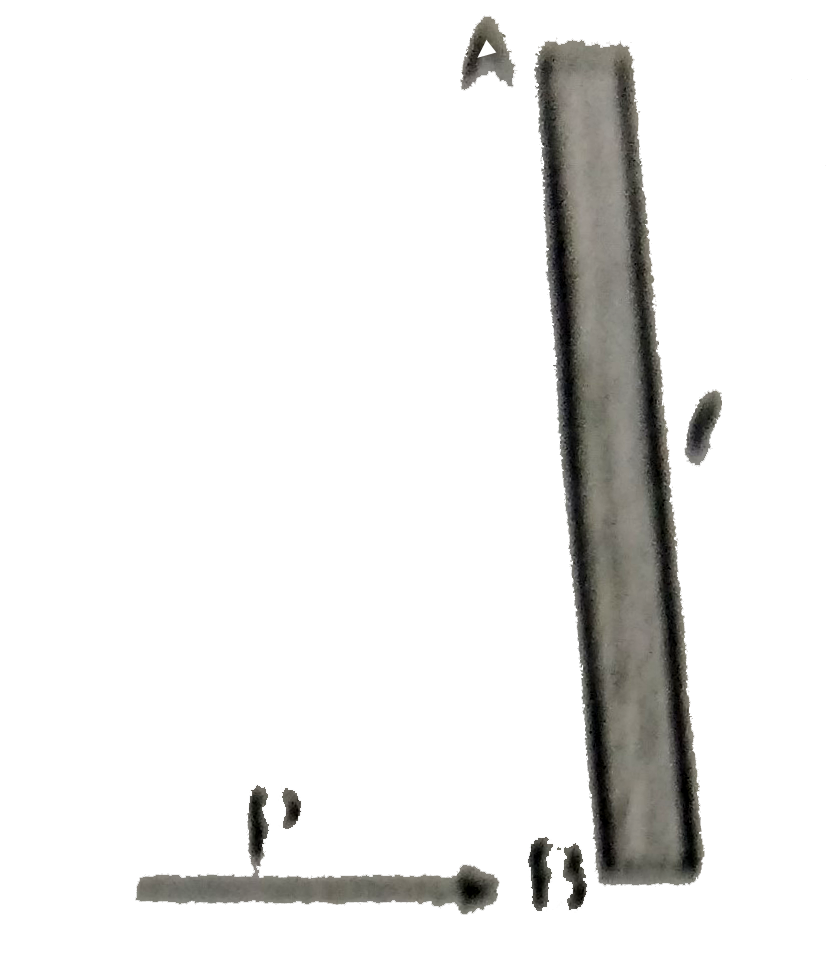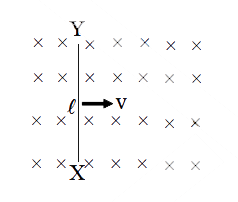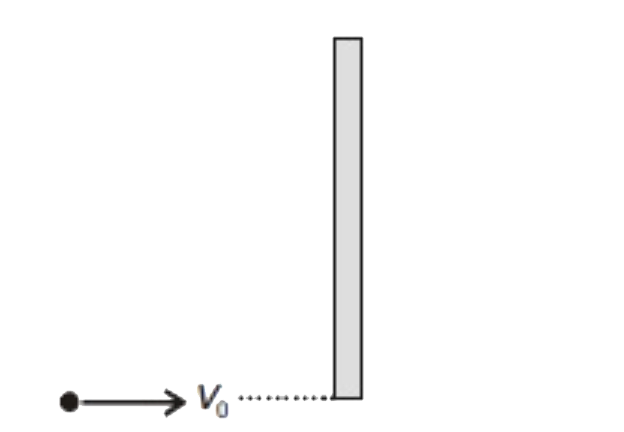A conducting rod of mass m and length l is placed over a smooth horizontal surface. A uniform magnetic field B is acting perpendicular to the rod. Charge q is suddenly passed through the rod and it acquires an initial velocity v on the surface, then q is equal to
2mvBI
BI2mv
mvBI
BlV2m
The correct Answer is:C
To solve the problem, we need to find the charge q that is passed through the conducting rod, given that it acquires an initial velocity v in a magnetic field B. Here’s the step-by-step solution:
Step 1: Understand the scenario
We have a conducting rod of mass m and length l placed on a smooth horizontal surface. A uniform magnetic field B is acting perpendicular to the rod. When a charge q is passed through the rod, it acquires an initial velocity v.
Step 2: Identify the forces acting on the rod
The force that causes the rod to move is the magnetic force. According to the Lorentz force law, the magnetic force F on a current-carrying conductor in a magnetic field is given by:
F=I⋅B⋅l
where I is the current flowing through the rod.
Step 3: Relate current to charge
The current I can be expressed in terms of charge q and the time Δt during which the charge flows:
I=qΔt
Substituting this into the force equation gives:
F=(qΔt)⋅B⋅l
Step 4: Use the impulse-momentum theorem
The impulse imparted to the rod is equal to the change in momentum. Since the rod starts from rest and acquires a velocity v, the change in momentum is:
Impulse=Δp=m⋅v
Step 5: Relate impulse to force and time
Impulse can also be expressed as the product of force and time:
Impulse=F⋅Δt
Setting the two expressions for impulse equal gives:
m⋅v=F⋅Δt
Step 6: Substitute the expression for force
Substituting the expression for F from Step 3 into the impulse equation:
m⋅v=(qΔt⋅B⋅l)⋅Δt
This simplifies to:
m⋅v=q⋅B⋅l
Step 7: Solve for charge q
Rearranging the equation to solve for q gives:
q=m⋅vB⋅l
Final Answer
Thus, the charge q that is passed through the rod is:
q=m⋅vB⋅l
We have a conducting rod of mass m and length l placed on a smooth horizontal surface. A uniform magnetic field B is acting perpendicular to the rod. When a charge q is passed through the rod, it acquires an initial velocity v.
The force that causes the rod to move is the magnetic force. According to the Lorentz force law, the magnetic force F on a current-carrying conductor in a magnetic field is given by:
F=I⋅B⋅l
where I is the current flowing through the rod.
The current I can be expressed in terms of charge q and the time Δt during which the charge flows:
I=qΔt
Substituting this into the force equation gives:
F=(qΔt)⋅B⋅l
The impulse imparted to the rod is equal to the change in momentum. Since the rod starts from rest and acquires a velocity v, the change in momentum is:
Impulse=Δp=m⋅v
Impulse can also be expressed as the product of force and time:
Impulse=F⋅Δt
Setting the two expressions for impulse equal gives:
m⋅v=F⋅Δt
Substituting the expression for F from Step 3 into the impulse equation:
m⋅v=(qΔt⋅B⋅l)⋅Δt
This simplifies to:
m⋅v=q⋅B⋅l
Rearranging the equation to solve for q gives:
q=m⋅vB⋅l
Thus, the charge q that is passed through the rod is:
q=m⋅vB⋅l
Topper's Solved these Questions
- BOOK - DC PANDEY ENGLISHCHAPTER - MAGNETIC EFFECT OF CURRENT AND MAGNETISMEXERCISE - More than One Option is Correct25videos
MAGNETIC EFFECT OF CURRENT AND MAGNETISM
- BOOK - DC PANDEY ENGLISHCHAPTER - MAGNETIC EFFECT OF CURRENT AND MAGNETISMEXERCISE - Comprehension type Questions16videos
MAGNETIC EFFECT OF CURRENT AND MAGNETISM
- BOOK - DC PANDEY ENGLISHCHAPTER - MAGNETIC EFFECT OF CURRENT AND MAGNETISMEXERCISE - Integer type Questions10videos
MAGNETIC EFFECT OF CURRENT AND MAGNETISM
- BOOK - DC PANDEY ENGLISHCHAPTER - LAWS OF THERMODYNAMICSEXERCISE - Level 2 Subjective18videos
LAWS OF THERMODYNAMICS
- BOOK - DC PANDEY ENGLISHCHAPTER - MEASUREMENT AND ERRORSEXERCISE - Subjective19videos
MEASUREMENT AND ERRORS
Similar Questions
A uniform rod AB of mass m and length l at rest on a smooth horizontal surface . An impulse P is applied to the end B. The time taken by the rod to turn through a right angle is :
 View Solution
View SolutionA uniform rod AB of mass m and length l at rest on a smooth horizontal surface . An impulse P is applied to the end B. The time taken by the rod to turn through a right angle is :
 View Solution
View SolutionA conducting wire of length l is placed on a rough horizontal surface, where a uniform horizontal magnetic field B perpendicular to the length of the wire exists. Least values of the forces required to move the rod when a current I is established in the rod are observed to be F1 and F2(<F1) for the two possible directions of the current through the rod, respectively. Find the weight of the rod and the coefficient of friction between the rod and the surface.
View SolutionA small conducting rod of length l, moves with a uniform velocity v in a uniform magnetic field B as shown in fig __
 View Solution
View SolutionA uniform rod of mass m and length L is at rest on a smooth horizontal surface. A ball of mass m, moving with velocity v0, hits the rod perpendicularly at its one end and sticks to it. The angular velocity of rod after collision is
 View Solution
View SolutionA uniform rod of mass m, length l rests on a smooth horizontal surface. Rod is given a sharp horizontal impulse p perpendicular to the rod at a distance l/4 from the centre. The angular velocity of the rod will be
View SolutionA uniform rod AB of mass m and length l is at rest on a smooth horizontal surface. An impulse J is applied to the end B, perpendicular to the rod in the horizontal direction. Speed of particlem P at a distance l6 from the centre towards A of the rod after time t=πml12J is.
View SolutionA uniform thin rod of mass m and length l is standing on a smooth horizontal suface. A slight disturbance causes the lower end to slip on the smooth surface and the rod starts falling. Find the velocity of centre of mass of the rod at the instant when it makes an angle θ with horizontal.
View SolutionMoment of inertia of a thin rod of mass m and length l about an axis passing through a point l/4 from one end and perpendicular to the rod is
View SolutionA uniform rod of mass M and length L, area of cross section A is placed on a smooth horizontal surface. Forces acting on the rod are shown in the digram

Total elastic potential energy stored in the rod is :View Solution

